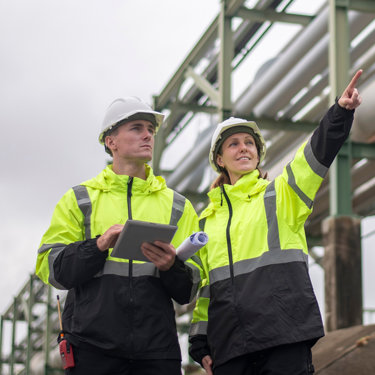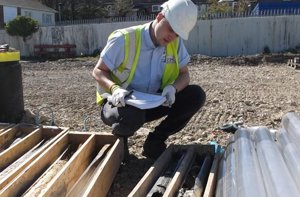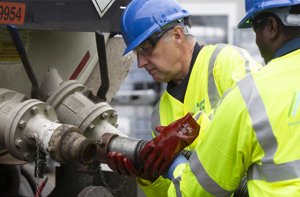
Decommissioning of energy assets
Ready to discuss your project?
Please leave your details and a member of our team will reach out to discuss your requirements in more detail and arrange next steps.
We safely and compliantly decommission assets on any site such as forecourts, oil terminals, and process plants.
Our experts project manage the entire process from planning and preparation to demolition and onward development ensuring you achieve the best value for your land, with fast turnaround, while reducing environmental risk.
Demolition work could range from infilling tanks and leaving them safely in situ to full tank removal and disposal depending on the intended use of the site.
Whether you’re decommissioning a single tank or full fuel terminal, we work with you to plan the process from initial environmental audit to final site sign-off.
Features and outputs
- Enhanced Oil Recovery (EOR)
- Industrial and heavy plant removal
- Fuel tank decommissioning
- Hazardous waste management
- Site decontamination and remediation
Added value
Expertise
Waste disposal
Geoenvironmental
Planning and preparation
Before any construction work can begin, operators must verify that the land is safe for its intended use and does not contain pollutants. A detailed desk study is followed by a technical site investigation to confirm the levels of contamination present.
Our experts perform essential due diligence before breaking ground including initiating updated risk assessments and health and safety provisions under the Construction, Design and Management (CDM) Regulations 2015, to the production of a point-by-point remediation method statement (RMS).
Demolition
The next stage of the process is making the site safe, clear, and accessible through tank drainage and gas freeing. After our civil engineering team expose the below ground infrastructure, our expert fuel engineers carry out the ‘bottoming’ process, which includes dropping fuel valves to purge them of gas and liquid, cleaning tanks, lines, separators, and dispensers, and removing residual materials for responsible waste disposal.
Gas monitor wands are placed inside pipes to regulate vapour levels and ensure all activity complies with the Dangerous Substances and Explosive Atmospheres Regulations 2002 (DSEAR).
Our in-house CompEx electricians isolate electrical distribution equipment and prepare potentially volatile structures for removal.
Using Enhanced Oil Recovery (EOR) techniques we uplift and manage oil or fuel with minimal harm to the surrounding environment.
We then use market leading cleaning techniques to remove residual fuel from containers, lines, separators, and dispensers, minimising contamination hazards at every step.
Demolition onward development
With the site clear and compliant, our civil engineering teams step in to begin excavation, working above and below ground to clear earth, pipe networks, tanks, and buildings.
Once the physical assets are extracted, targeted remediation work actively minimises contamination.
To demonstrate environmental best practice, an ongoing programme of soil and groundwater monitoring is introduced to check for signs of subsurface pollution. Validation continues through the entire remediation process, and for a period afterwards, with regular collection and analysis of soil and water samples to track decreasing contamination loads.
When lawful limits have been reached, regulators and environmental advisors formally sign off the site, confirming soil and groundwater are compliant and ready for redevelopment.
You might also be interested in...
Environmental compliance today, creating a sustainable tomorrow
Helping you reduce risk to the environment and your operation by managing assets compliantly while achieving commercial, ESG, and net-zero goals.
Contact our experts



